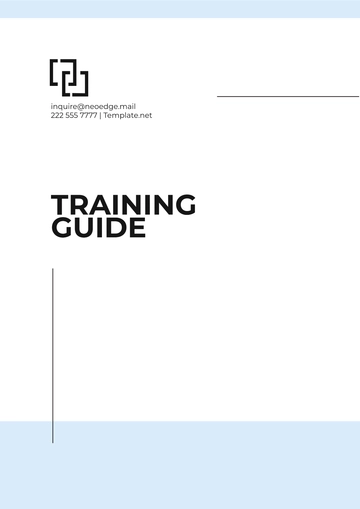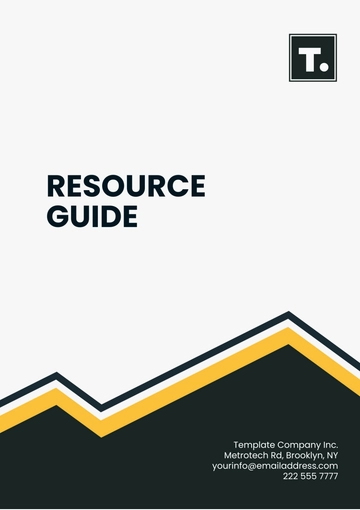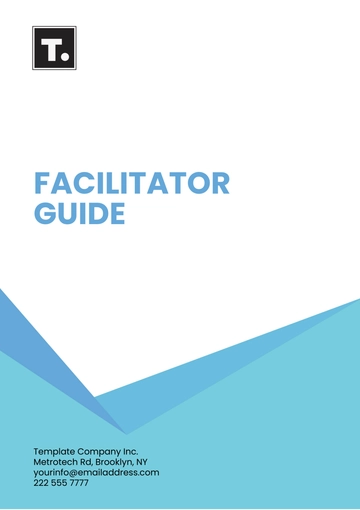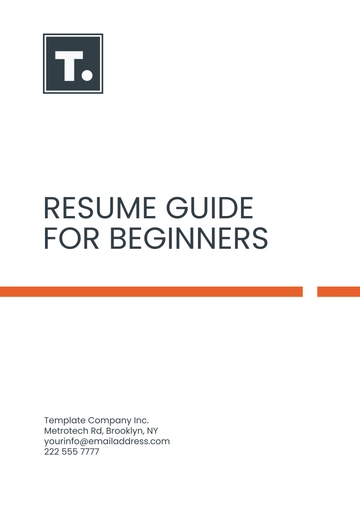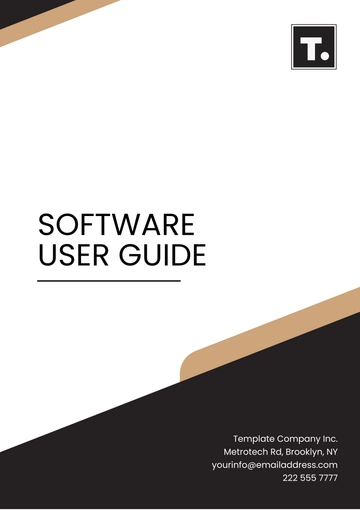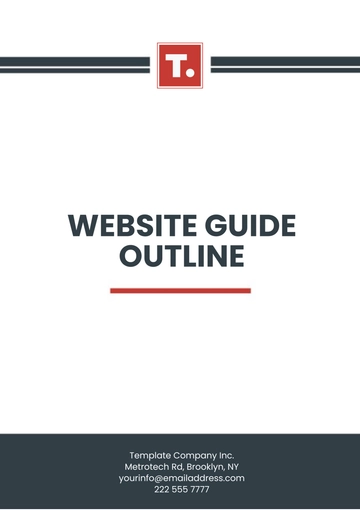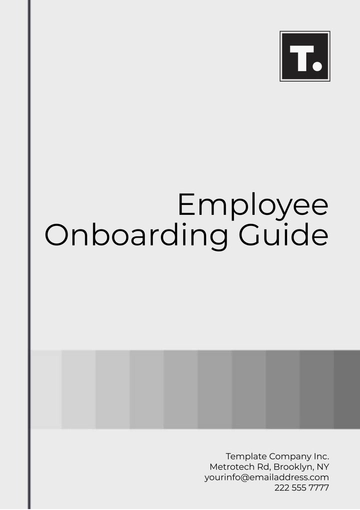Free Law Firm Governance Guide
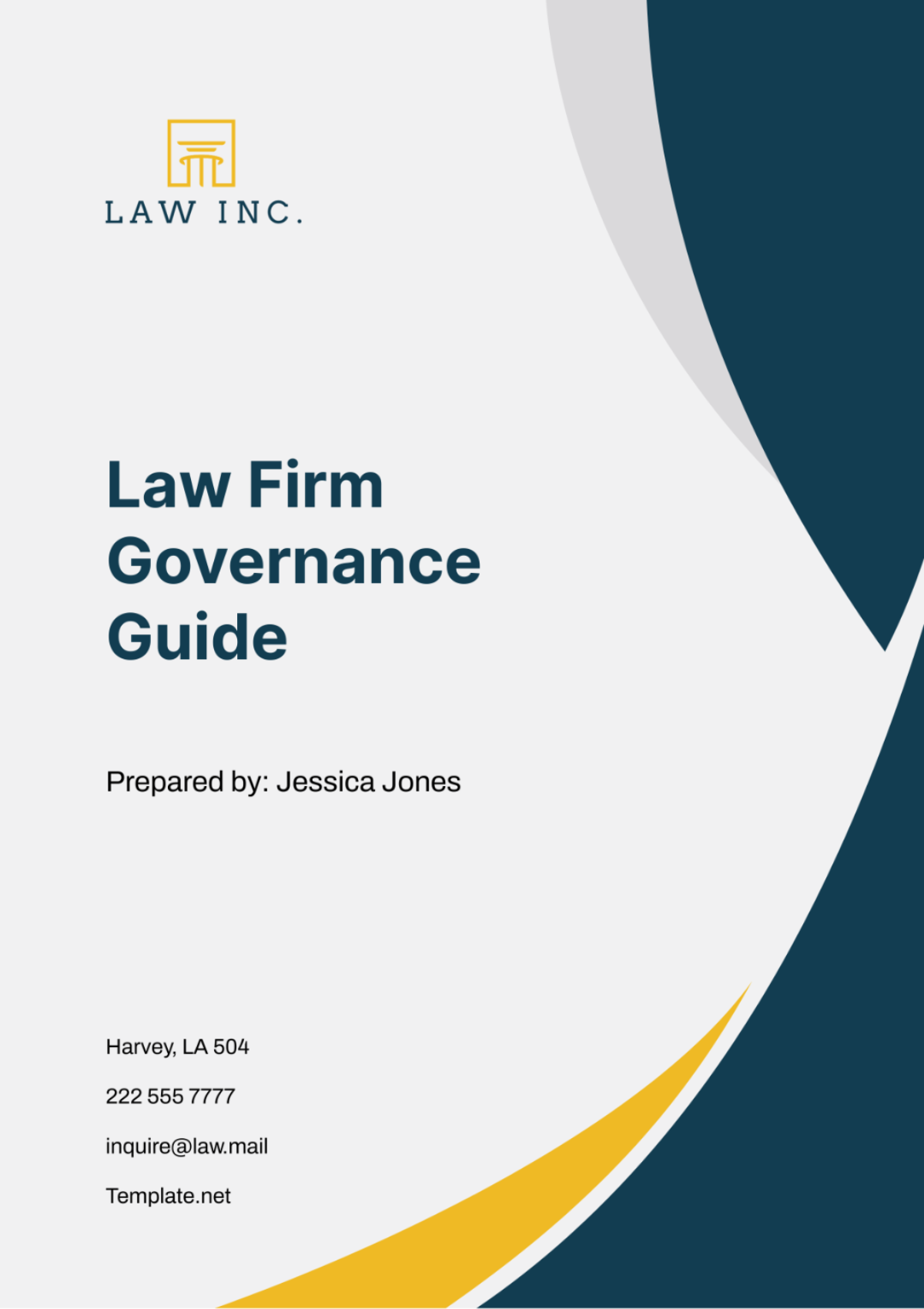
I. Introduction
A. Purpose
This Governance Guide is designed to articulate the principles and practices that steer our operations and decision-making processes. It serves as a blueprint to enhance transparency and accountability within our firm, ensuring that all actions align with our strategic goals and comply with regulatory standards. The guide aims to foster a robust governance environment, where clarity in roles and responsibilities empowers every member of the firm to contribute effectively to our collective success.
B. Importance
Good governance is crucial for sustaining the integrity and efficiency of our operations. It ensures that decision-making processes are fair, transparent, and aligned with both the best interests of our clients and the long-term sustainability of the firm. By adhering to these guidelines, we cultivate a culture of trust and mutual respect among partners, associates, and staff, while also safeguarding our reputation in the legal community and enhancing our competitive position.
C. Values and Mission
Our firm operates on the foundation of core values that emphasize excellence, integrity, and teamwork. We are committed to delivering outstanding legal services that meet the highest standards of professionalism and ethics. Our mission is to serve our clients with dedication and to address their legal needs with innovative solutions and proactive legal strategies. By upholding these values and focusing on our mission, we strive to be a leader in the legal sector, contributing positively to the communities where we operate.
II. Governance Structure
A. Governance Model
Our firm is structured as a limited liability partnership, which combines the flexibility of a partnership with the advantages of corporate status. This model supports a collaborative management approach while providing limited liability to its partners. We believe this structure allows for the effective distribution of management responsibilities and the efficient handling of complex legal projects, enhancing our ability to adapt to changes in the legal landscape.
B. Organizational Chart
The organizational structure of our firm is designed to support clear lines of authority and responsibility. Below is a table outlining the key roles within our governance framework along with their respective responsibilities:
Role | Responsibilities |
|---|---|
Managing Partner | Oversees firm operations, strategic direction, and leadership. |
Practice Group Leaders | Manage specific areas of practice, overseeing case management and client relations. |
Chief Financial Officer (CFO) | Responsible for financial planning, risk management, and compliance. |
Human Resources Director | Manages recruitment, staff development, and workplace policies. |
C. Equity and Non-Equity Partners
In our firm, the distinction between equity and non-equity partners is based on ownership, financial stake, and the level of decision-making authority. Equity partners have a direct investment in the firm and share in the profits and losses. They participate in major strategic decisions and have substantial influence over the direction of the firm. Non-equity partners, while highly valued for their expertise and contributions to client service, do not share in the ownership of the firm and typically have less influence on its governance. This structure allows us to recognize and reward contributions at various levels while maintaining a clear and effective governance framework.
III. Management Committees
A. Selection and Composition
The selection process for our management committees involves a nomination by the Managing Partner, followed by a vote among equity partners. This process ensures that members chosen to serve on these committees are recognized for their expertise, leadership skills, and dedication to the firm's goals. Members typically include senior partners and experienced attorneys who have demonstrated commitment to our firm’s values and strategic direction.
Committee | Members |
|---|---|
Executive Committee | Managing Partner, CFO, Practice Group Leaders |
Audit Committee | CFO, Selected Senior Partners |
Risk Management Committee | Senior Partners specializing in Ethics and Compliance |
B. Responsibilities and Powers
Our management committees are vested with significant responsibilities and powers to ensure the effective governance of the firm. The Executive Committee oversees the firm's strategic direction, making critical decisions on business development, firm policy, and operational adjustments. The Audit Committee is responsible for financial oversight, including reviewing financial statements and ensuring compliance with legal and regulatory requirements. The Risk Management Committee focuses on identifying potential risks to the firm’s operations and reputation, and developing strategies to mitigate these risks.
IV. Leadership Roles
A. Positions
Leadership within our firm is structured to promote efficiency and accountability. Each leadership role is clearly defined to support the firm’s strategic objectives and to ensure high standards of client service and operational management.
Position | Description |
|---|---|
Managing Partner | Leads the firm and sets strategic direction. |
Practice Group Leaders | Heads specific areas of practice, managing team performance and client relations. |
Chief Financial Officer (CFO) | Oversees financial operations, including budgeting, investments, and financial reporting. |
Human Resources Director | Manages recruitment, staff development, and compliance with employment laws. |
B. Criteria for Selection
Leadership positions within the firm are filled based on a combination of merit, expertise, and leadership potential. Criteria for selection include:
Demonstrated expertise in relevant legal fields.
Proven leadership abilities and previous management experience.
Strong communication and interpersonal skills.
Commitment to the firm’s values and ethical standards.
Ability to contribute to the firm’s strategic goals.
C. Criteria for Removal
Leaders can be removed from their positions under certain circumstances to maintain the integrity and effectiveness of our governance structure. Reasons for removal include:
Failure to perform duties effectively.
Breach of ethical standards.
Loss of confidence among partners.
Persistent negative feedback from clients or team members.
D. Term Limits and Succession Planning
Leadership positions within the firm are subject to term limits to promote dynamism and adaptability in governance. Most leadership roles, including that of the Managing Partner, are held for a term of three years, renewable once. Succession planning involves identifying potential leaders from within the firm well in advance. This process includes mentoring programs and leadership training to ensure smooth transitions and continuity in leadership roles and responsibilities.
V. Partner Meetings
A. Schedule
Partner meetings are held quarterly to ensure all partners are informed of and can contribute to the strategic decisions of the firm. These meetings are essential for aligning the firm’s goals, assessing progress, and discussing key operational issues. Special meetings may also be convened as necessary to address urgent or significant matters requiring immediate attention.
B. Conducting Meetings
The effectiveness of partner meetings is crucial for the decision-making process. The following guidelines are established to ensure productive meetings:
Setting Agendas: Agendas are circulated at least one week in advance to allow partners time to prepare. Agenda items must be proposed by partners at least two weeks prior to the meeting and finalized by the Executive Committee.
Meeting Conduct: Meetings are chaired by the Managing Partner and must start and end on time. Discussions should be concise and focused, with each speaker given a fair opportunity to express their views.
Documentation: Minutes of the meeting are recorded and circulated within 48 hours post-meeting to ensure all partners are informed of the decisions and any action items.
C. Voting Rights and Procedures
All equity partners have the right to vote on key decisions affecting the firm. Voting typically occurs at partner meetings, and decisions are made based on a majority vote. For significant decisions, such as changes to partnership agreements or large financial commitments, a higher quorum may be required, typically two-thirds of all partners. Votes can be cast in person, or where necessary, via secure electronic means to accommodate partners who are unable to attend in person.
VI. Financial Management
A. Financial Responsibilities
Financial stewardship is critical to the success and stability of our firm. Key financial responsibilities include:
Budgeting: Developing and managing annual budgets to ensure financial health and operational efficiency.
Financial Oversight: Monitoring and managing the firm’s financial activities to align with strategic goals.
Investment Decisions: Evaluating and making decisions on investments that support the firm’s long-term growth.
B. Policies on Capital Contributions and Distributions
Our firm requires capital contributions from equity partners as a testament to their commitment and investment in the firm’s future. The amount and terms are determined based on the partner’s level and tenure. Distributions of profits are made quarterly, based on the firm’s financial performance and in accordance with each partner’s equity share. These policies are designed to reinforce financial solidarity and ensure the firm’s operations are well-funded.
C. Financial Reporting
Transparency in financial reporting is paramount. Our firm adheres to the highest standards of financial accountability:
Quarterly Reports: Comprehensive financial statements are prepared and reviewed quarterly.
Annual Audit: An annual audit is conducted by an independent external auditor to ensure accuracy and transparency.
Partner Access: All partners have access to detailed financial reports to foster an environment of trust and collective responsibility for the firm’s financial health.
VII. Risk Management and Compliance
A. Legal and Ethical Standards
Our firm commits to the highest legal and ethical standards to uphold the integrity of the legal profession and maintain client trust. Compliance with these standards is fundamental to our operations. Key laws and regulations that govern our activities include:
The American Bar Association (ABA) Model Rules of Professional Conduct: Guidelines for ethical responsibilities and conduct.
Sarbanes-Oxley Act: Implications for corporate governance and financial practices.
Health Insurance Portability and Accountability Act (HIPAA): Requirements for the protection of personal health information.
Fair Labor Standards Act (FLSA): Standards for employment law regarding overtime, minimum wage, and employment classification.
Compliance training is mandatory for all new hires and ongoing training is provided annually to ensure all team members are updated on legal requirements and ethical obligations.
B. Conflict of Interest Policies
Our firm strictly enforces policies to manage and mitigate conflicts of interest to maintain impartiality and client trust. All partners and associates are required to disclose any potential conflicts of interest upon discovery. These include personal or financial interests that might affect their professional judgment. A dedicated committee reviews such disclosures to determine the appropriate course of action, which may involve reassigning responsibilities or declining representation.
C. Client Confidentiality
Protecting client confidentiality is paramount. All client communications are conducted through secure platforms. The firm ensures that the latest cybersecurity measures are implemented to prevent unauthorized access to client data. All employees must sign confidentiality agreements as a condition of employment.
VIII. Human Resources
A. Hiring Practices
Our hiring practices are designed to attract and retain the best talent while promoting diversity and inclusivity. We utilize a combination of internal referrals, job postings in industry-specific publications, and recruitment agencies. Candidates undergo a rigorous screening process, including background checks and multiple interviews with key team members. We are committed to hiring a diverse workforce and have policies in place to ensure an unbiased hiring process.
B. Compensation Models
Compensation at our firm is structured to attract and retain top talent while encouraging performance and client service. Here is an overview of our compensation models:
Position | Base Compensation | Bonus Structure | Additional Benefits |
|---|---|---|---|
Partners | Equity Share | Performance-based bonuses | Health, retirement plans |
Associates | Salary | Discretionary bonuses based on performance | Health, retirement plans |
Support Staff | Hourly/Salary | Annual bonuses for outstanding performance | Health benefits, paid leave |
C. Code of Conduct
Our firm operates under a strict code of conduct to ensure all employees uphold our standards of integrity and professionalism:
Professionalism: All staff are expected to conduct themselves professionally in all interactions.
Integrity: Employees must act with honesty and integrity, avoiding any actions that could harm the firm’s reputation or client relations.
Respect: We are committed to a workplace where respect for individual differences is a priority.
Accountability: Each employee is accountable for their actions and is expected to adhere to firm policies and legal guidelines.
IX. Professional Development and Training
A. Training Programs
Our firm is committed to the ongoing professional development of all team members to ensure they remain at the forefront of legal practice and client service. We offer a variety of training programs tailored to different roles and career stages:
Program | Duration | Frequency |
|---|---|---|
New Hire Orientation | 1 week | Upon hiring |
Legal Skills Workshops | 2 days | Biannually |
Ethics and Compliance | 1 day | Annually |
Technology Training | Variable | As needed or annually |
B. Leadership Development
Leadership development is a key priority, as strong leaders drive our firm's success. Our initiatives include:
Mentorship Program: Pairing junior lawyers with experienced partners for guidance and support.
Management Training: Workshops on effective management techniques and firm governance.
Retreats: Annual leadership retreats to foster team building and strategic planning.
C. Continuing Education
To maintain the highest standards of legal expertise, our firm supports continuing education for all legal staff. This includes:
Reimbursement for relevant courses and seminars.
Paid time off for exam preparation and attendance at continuing education events.
Regular updates on available educational opportunities and legal advancements.
X. Amendments
The governance policies outlined in this guide are dynamic and will be reviewed and updated as needed to reflect changes in the legal environment and our firm’s strategic objectives. Amendments to the guide can be proposed by any partner, and must be reviewed by the Executive Committee. Changes require approval by a majority vote at a partner meeting. This ensures that our governance practices remain relevant, effective, and aligned with best practices in law firm management.
- 100% Customizable, free editor
- Access 1 Million+ Templates, photo’s & graphics
- Download or share as a template
- Click and replace photos, graphics, text, backgrounds
- Resize, crop, AI write & more
- Access advanced editor
Introducing the Law Firm Governance Guide Template from Template.net, perfect for structuring your firm's management practices. This template is fully editable and customizable in our AI Editor tool, allowing you to tailor it to your specific needs with ease. Enhance your firm's operations with a professional governance framework designed for maximum efficiency and compliance.






